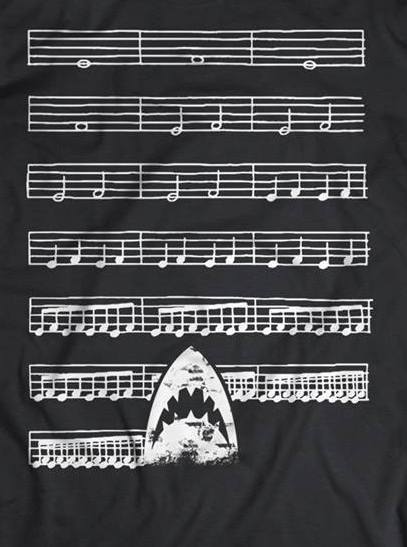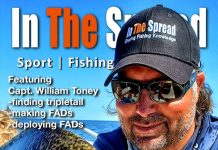April’s Fishing Outlook
As many of you have heard by now a brown alga bloom in the inshore waters of the Banana River Lagoon has raised its ugly head again. This is sad news for some parts of our east coastal estuaries and the no-motor zone, but if there is a bright side to this story, this event has open the eyes of many who prefer to look the other way when it comes to the health and preservation of our fragile resources. Another positive note is the alga bloom is currently isolated to the central Indian River Lagoon and has not occurred in the portions of the Lagoon system north of SR 405 (NASA Causeway) and the Mosquito Lagoon. This forecast is based on my past experiences fishing in a healthy lagoon system, so I may be off a little on my predictions this month.
Some highlights for fishing on Florida’s east central coast during the spring are: the weather is still cool and enjoyable, the waters warming up and the fish begin to shift into their pre-spawning feeding mood. Some examples of this behavior are the cobia moving north up the Atlantic coast, and the spotted sea trout transitioning into their traditional spawning areas on the inshore flats. Like many saltwater species, the cobia and sea trout spawn in aggregations or groups, not on beds. In the case of the cobia their traditional spawning areas are off the central east coast of the US, and in the northern Gulf of Mexico. As the fish migrate north, they burn energy and feed heavily along the way, hence the cobia run we experience each spring. As usual, windy conditions have and will limit the fishable days.
On the flats, the smaller male sea trout move up into the shallows first, and then call the females in to spawn by drumming loudly just after dusk when the conditions are right, usually on the first new moon or full moon in April, and then again on the new and full moons throughout the summer.
As we move in near-shore, tripletail should become more dependable, and look for late season cobia as well. The cobia run thus far has been sporadic thus far, with bait pods (Atlantic menhaden or pogies) arriving late this year. As the bait pod move in, look for Spanish mackerel, bluefish, redfish, giant jack crevalle, sharks, and smoker kings. Concentrate your efforts in these areas. When you see bait balled up and pushed to the surface, there is a high probability that feeding gamefish are pressuring the bait from below.
In the inlets, look for good numbers of flounder, sheepshead and black drum around structure such as jetties and docks, and Spanish mackerel, blues, and large jacks in open water. Also look for the nighttime snook and tarpon action to heat up in the Sebastian Inlet.
On the lagoon flats, fish the early morning and late evening with your favorite top water plugs for extreme trout and redfish action, and soft plastics and jigs in deeper water, 2 to 3 feet after the midday sun settles in. Remember, April is one of the months when larger sea trout are egg laden for the spawn, so it’s very important to handle and release the larger females with great care. If you are looking for snook and tarpon action inside, the Sebastian River will be the place to go.
As always, if you need information or have any questions, please contact me.
Good luck and good fishing,
Captain Tom Van Horn
- January 2021:Tom Van Horn - December 31, 2020
- December, Tom Van Horn - December 1, 2020
- Tom Van Horn:November - October 30, 2020











